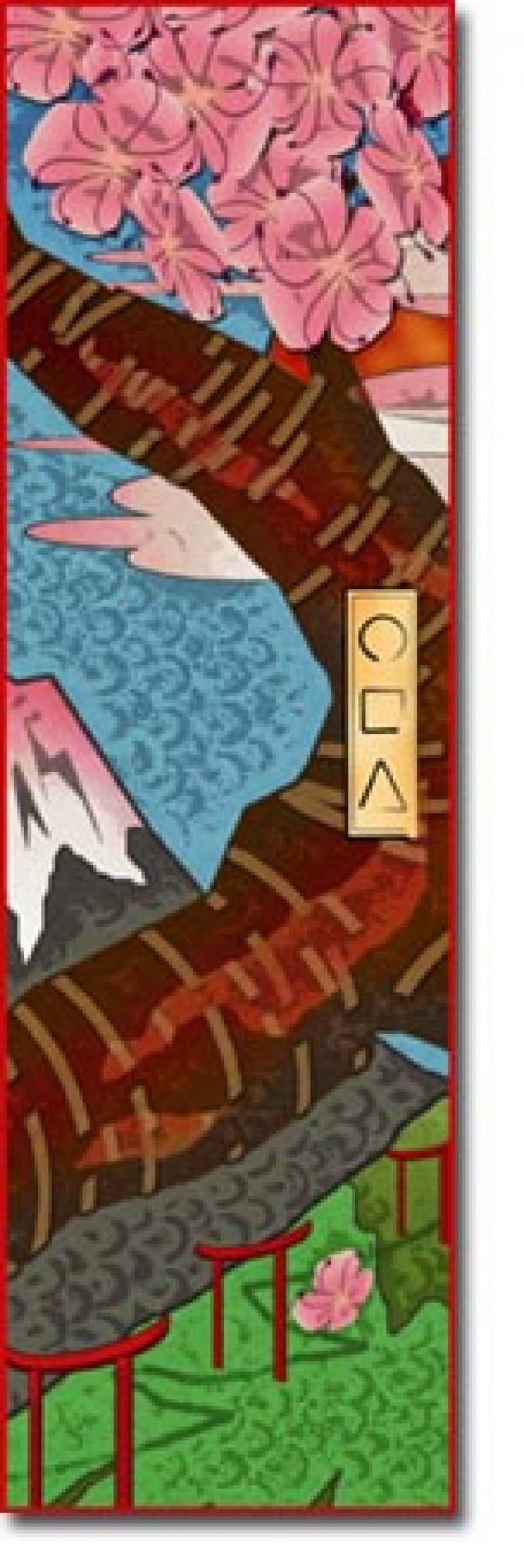On The Way: The Daily Zen Journal
The Living Method of Turning the Light Around
Lu Yan (829-874)
As you go along practicing turning the light around, you need not give up your normal occupation. An ancient said, “When matters come up, one should respond; when things come up, one should discern.” If you manage your affairs with accurate mindfulness, then the light is not overcome by things, so it will do to repeat this formless turning around of the light time and again.
If you can look back again and again into the source of mind, whatever you are doing, not sticking to any image of person or self at all, then this is “turning the light around wherever you are.” This is the finest practice.
In the early morning, if you can clear all objects from your mind and sit quietly, that is best. Whenever you are engaged in work or dealing with people, just use this “looking back” technique, and there will be no interruption.
The Secret of Freedom
The essence of the great Way is to act purposefully without striving. Because of nonstriving, one does not cling to local conventions, forms, or images; but because of not striving yet acting purposefully, one does not fall into indifferent emptiness, dead voidness. The preceding talk of turning the light around points out a method for beginners to help them to attain independence.
Turning the light around is only the general term: with each level of progress in practice, the method of turning around becomes subtler.
When you want to enter quietude, first tune and concentrate body and mind, so that they are free and peaceful. Let go of all objects, so that nothing whatsoever hangs on your mind. After that lower your eyelids and gaze inward.
Now when you turn the light around to shine inward, the mind is not aroused by things. Next the coming and going is traceless.
Ordinarily, once people let their eyes and ears pursue things, they get stirred up, only to stop when things are gone. When you first practice turning the light around, your mind gets scattered or distracted, so you want to concentrate it. Once concentration is attained, you are naturally buoyant.
As long as the mind has not reached supreme quiet, it cannot act from non striving. Action caused by momentum is random action, not essential action. Therefore it is said that action influenced by things is human desire, while action uninfluenced by things is the action of Heaven.
Desire is moving toward things that exist, or being possessive toward things. This is thought that is out of place, action with an ulterior motive. When not a single thought arises, then true mindfulness is born; this is pure attention. When the celestial potential is suddenly activated in the midst of silence, is this not spontaneous attention? This is what is meant by acting without striving.
The learning of sages begins with knowing when to stop and ends with stopping at ultimate good. It begins in the infinite and winds up in the infinite.
In Buddhism, activating the mind without dwelling on anything is considered the essential message of the whole canon. In Taoism, “effecting openness” is the whole work of completing essence and life. 
First is emptiness; you see all things as empty. Next is the conditional; though you know things are empty, you do not destroy the totality of things but take a constructive attitude toward all events in the midst of emptiness. Once you neither destroy things nor cling to things, this is the contemplation of the center.
You suppose that attainment is possible in quietude but lost in activity; you do not realize that the reason for loss through activity is because nothing is attained through stillness. When you attain nothing in quietude or lose anything through activity, in either case you have not yet reached the Way.
When you have presence of mind, only then do you have autonomy. When you have autonomy, only then can you manage affairs. However, presence of mind is easily interrupted. Practice it for a long time, though, and it will naturally become unbroken. Once it is unbroken, it is continuous. With continuity, the light shines bright. When the light shines bright, energy is full. When energy is full, then oblivion and distraction disappear without effort.
Observing mind means observing the purity of mind. The mind is basically nondual, just one vital reality; throughout the past and future, there is no other. Without leaving the objects of sense, you climb transcendent to the state of enlightenment.
But observation of mind can be deep or shallow; there is forced observation and there is spontaneous observation. When observation is deep and illusion is cleared, then this is true emptiness. Turning the light around is done not by the eyes but by the mind.
You have been affected by pollution for so long that it is impossible to become clear all at once. In truth, the matter of life and earth is important: once you turn the light around and recollect the vital spirit to shine stably, then your own mind is the lamp of enlightenment. Everyone has the lamp of mind.
Don’t let yourselves forget the mind and allow the spirit to become obscured. Radiant light is the function of mind; empty silence is the substance of mind.
Refining energy into spirit means keeping the clear and removing the polluted. Few are those who are calm and serious, rare are those who are sincere and unified.
Radiant light is the function of mind; empty silence is the substance of mind. If there is empty silence without radiant light, the silence is not true silence, the emptiness is not true emptiness; it is just a ghost cave.
Lu Yan (829-874)
Excerpted from The Secret of the Golden Flower Trans by Thomas Cleary 1991




The Secret of the Golden Flower is a lay manual of Buddhist and Taoist methods for clarifying the mind. A distillation of the inner psychoactive elements in ancient spiritual classics, it describes a natural way to mental freedom practiced in China for many centuries.
The golden flower symbolizes the quintessence of the paths of Buddhism and Taosim. Gold stands for light, the light of the mind itself; the flower represents the blossoming, or opening up, of the light of the mind. Thus the expression is emblematic of the basic awakening of the real self and its hidden potential.
From the introduction
While this method of “turning the light around” seems very simple and direct, there is still some room for further translation. All the various approaches to meditation seem to have a technique that gives us something to hold onto, counting one’s breath, then watching one’s breath; using mantra, asking “Who am I?”; visualization, all as means to focus one’s attention. They all serve to create a point of focus, something for the mind to do while it settles itself from distractions. However, part of the power of this method is that it doesn’t tell us too much about what to do, and thus leaves us free to explore on our own.
There is nothing extra required in this method, no dogma, no special gear or shrine outlined. It is always near at hand, practiced during daily life. However it is a way of using our attention that is somewhat unfamiliar. An easy way to approach this method is to simply pause. To pause is to disengage momentarily and step away from “doing” in order to return to a larger perspective. During the pause one can return to one’s center and see freshly.
Turning towards the Light within,
Elana